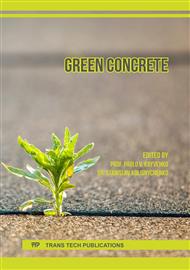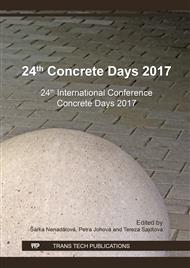[1]
C. Meyer, The greening of the concrete industry, Cement and Concrete Composites. 31 (2009) 601 – 605.
DOI: 10.1016/j.cemconcomp.2008.12.010
Google Scholar
[2]
J. De Brito, N. Saikia. Recycled Aggregate in Concrete: Use of Industrial Construction and Demolition Waste. Springer. (2013).
DOI: 10.1007/978-1-4471-4540-0_5
Google Scholar
[3]
D. Matias, J. de Brito, A. Rosa, D. Pedro. Mechanical properties of concrete produced with recycled coarse aggregates – influence of the use of superplasticizers. Construction Building Materials. 44 (2013) 101 – 109.
DOI: 10.1016/j.conbuildmat.2013.03.011
Google Scholar
[4]
BIOIS. Service contract on management of construction and demolition waste - SR1. Draft final report task 2, Management. Paris; (2010).
Google Scholar
[5]
Deconstruction. In: Britannica [online]. Encyclopædia Britannica, 2017 [cit. 2017-10-12].
Google Scholar
[6]
Pavlu T., Koci V., Sefflova M.. Environmental Assessment of Recycled Aggregate. Proceedings from 21st Czech Concrete Day 2014. 2014, 2014, 61 - 64.
Google Scholar
[7]
CSN EN 206. Concrete – Specification, performance, production and conformity. Prague: Czech standards institute, 2014 (in Czech).
Google Scholar
[8]
CSN EN 933-1 (72 1193). Tests for geometrical properties of aggregates – Part 1: Determination of particle size distribution – Sieving method. Prague: Czech standards institute, 2012 (in Czech).
DOI: 10.3403/01236185u
Google Scholar
[9]
CSN EN 1097-6 (721194). Tests for mechanical and physical properties of aggregates – Part 6: Determination of particle density and water absorption. Prague: Czech Office for Standards, Metrology and Testing, 2014 (in Czech).
Google Scholar



